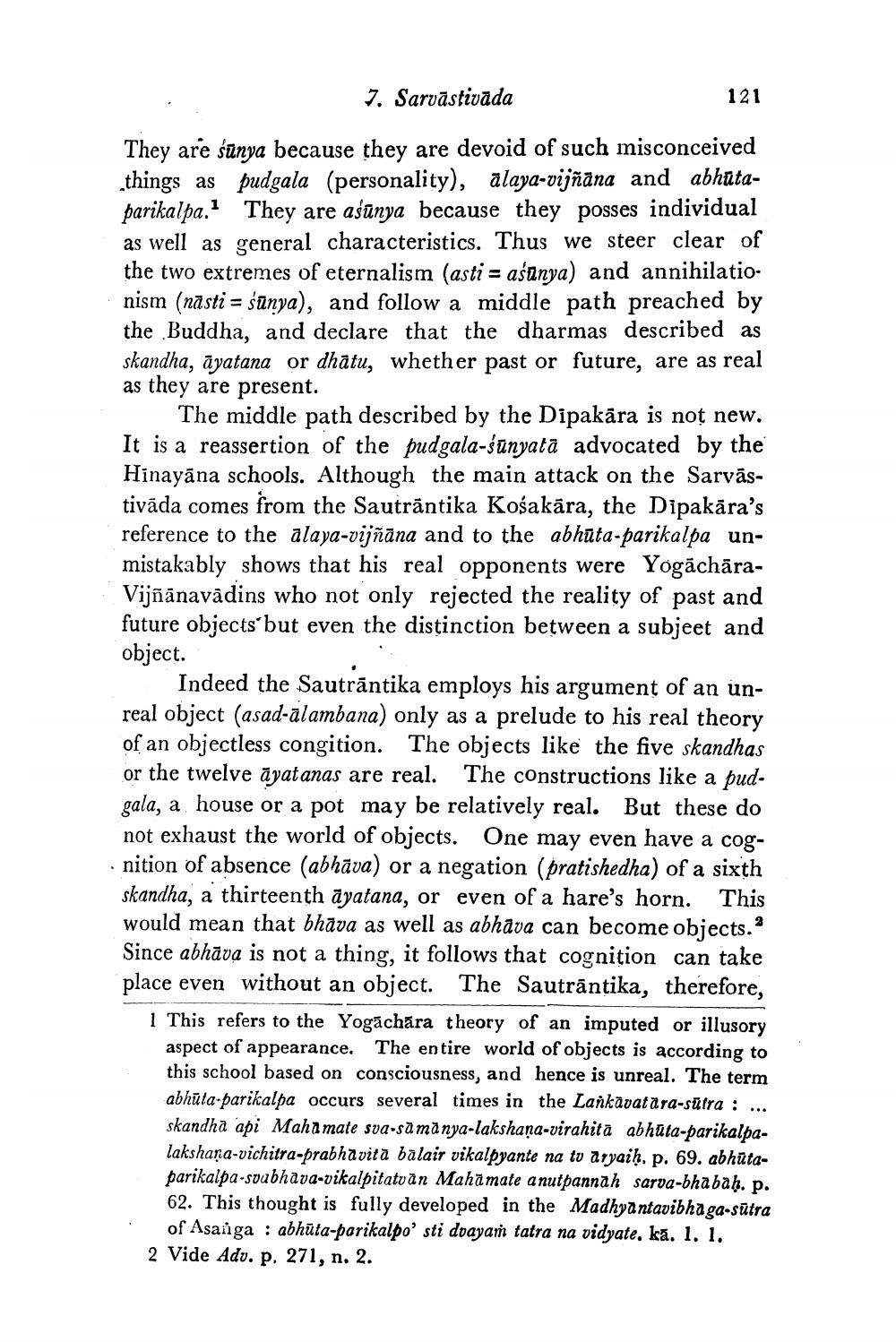________________ 7. Sarvastivada 121 They are sunya because they are devoid of such misconceived things as pudgala (personality), alaya-vijnana and abhutaparikalpa. They are asunya because they posses individual as well as general characteristics. Thus we steer clear of the two extremes of eternalism (asti = asanya) and annihilationism (nasti = sunya), and follow a middle path preached by the Buddha, and declare that the dharmas described as skandha, ayatana or dhatu, whether past or future, are as real as they are present. The middle path described by the Dipakara is not new. It is a reassertion of the pudgala-sunyata advocated by the Hinayana schools. Although the main attack on the Sarvastivada comes from the Sautrantika Kosakara, the Dipakara's reference to the alaya-vijnana and to the abhuta-parikalpa unmistakably shows that his real opponents were YogacharaVijnanavadins who not only rejected the reality of past and future objects but even the distinction between a subjeet and object. Indeed the Sautrantika employs his argument of an unreal object (asad-alambana) only as a prelude to his real theory of an objectless congition. The objects like the five skandhas or the twelve ayatanas are real. The constructions like a pudgala, a house or a pot may be relatively real. But these do not exhaust the world of objects. One may even have a cog* nition of absence (abhava) or a negation (pratishedha) of a sixth skandha, a thirteenth ayatana, or even of a hare's horn. This would mean that bhava as well as abhava can become objects. Since abhava is not a thing, it follows that cognition can take place even without an object. The Sautrantika, therefore, 1 This refers to the Yogachara theory of an imputed or illusory aspect of appearance. The entire world of objects is according to this school based on consciousness, and hence is unreal. The term abhuta-parikalpa occurs several times in the Lankavatara-sutra : ... skandha api Maha mate sva-samanya-lakshana-virahita abhuta-parikalpalakshana-vichitra-prabhavita balair vikalpyante na tv aryaih, p. 69. abhutaparikalpa-soubhava-vikalpitatvan Mahamate anutpannah sarva-bhabah. p. 62. This thought is fully developed in the Madhyantavibhaga-sutra of Asaiiga : abhuta-parikalpo'sti doayam tatra na vidyate, ka. 1. 1. 2 Vide Adv. p. 271, n. 2.




